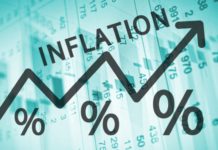The Ghana Statistical Service has announced the rebasing of the calculation of the Consumer Price Inflation effective July this year.
This means that the reference year for calculating the change in the prices of goods and services at any particular point, has moved from 2012 to 2017.
According to the Ghana Statistical Service, the move is in line with international best practices.
READ: Edwinology’s Lab: Sober down, settle down and yes – sit down
It is also to reflect current expenditure and consumption patterns.
Among the changes to the calculation is the sub-division of the national data into regional, rural and urban.
Also the number of markets covered has increased from 42 to 44.
In addition, the proportion of information obtained from the rural and urban areas has increased.
READ: Ghanaians must leave regulation of churches to religious bodies – Ex President
While that of the rural has increased from 32 to 29, the proportion of information obtained from the urban centres has increased from 10 to 15.
Meanwhile the number of items that their prices are factored into the calculation has shot up by as much as 66 percent; from 267 to 400.
Presently, inflation stands at 10 percent.
This represents 0.1 percentage increase compared to the 9.8 percent recorded in May 2018.
READ: Three inmates escape while flushing toilet
According to the government Statistician Mr. Baah Wadieh, the increase was as a result of the rise in inflation of non-food items such as transportation and clothing as well as footwear.




